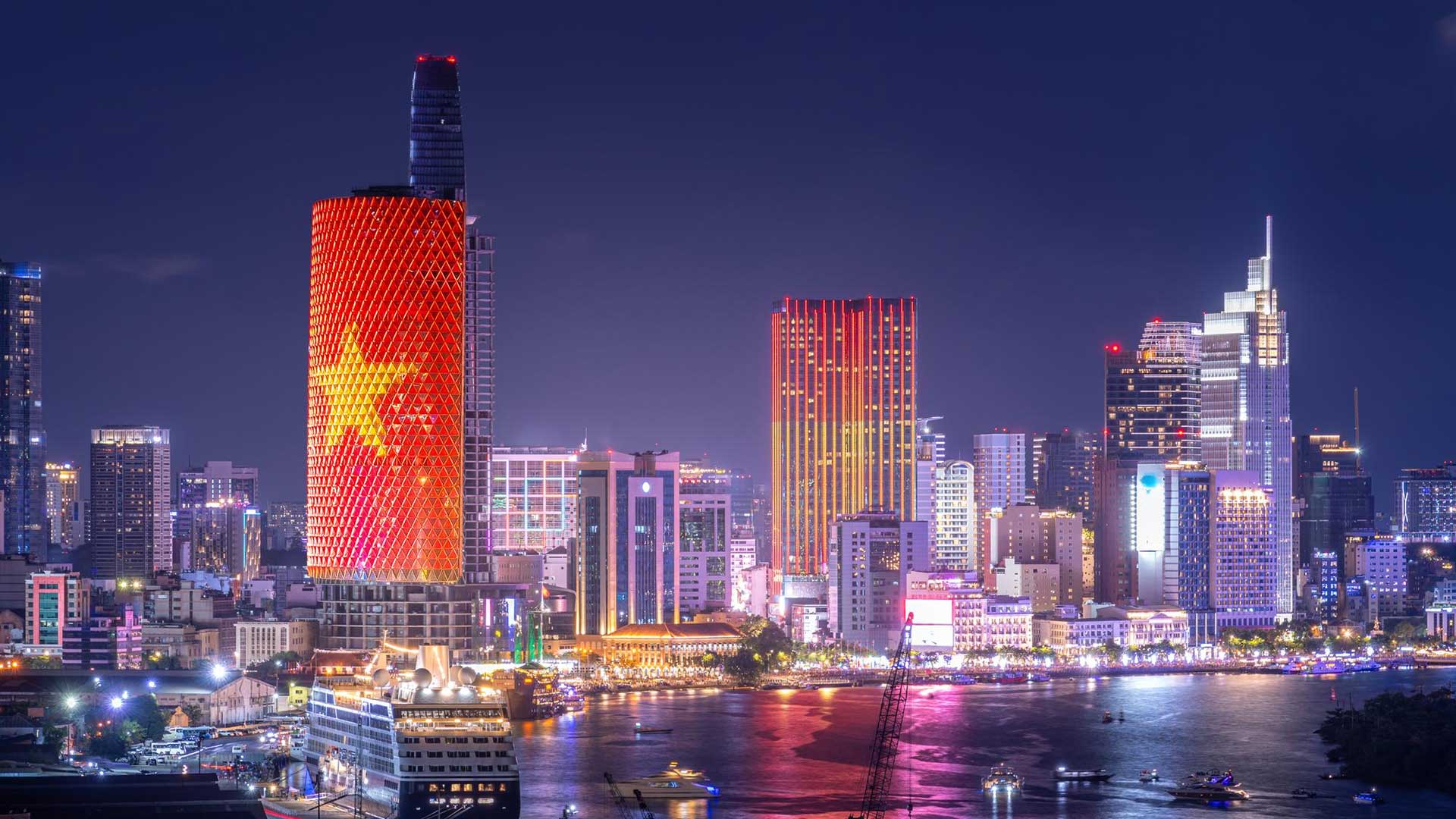Ho Chi Minh City (HCMC), often called Saigon, is Vietnam’s economic heart. This vibrant metropolis significantly drives the nation’s economic growth. With a population nearing 9.8 million in 2025, HCMC serves as a crucial gateway to the Mekong Delta and Southeast Asia. The city has recently achieved remarkable economic progress.
Economic Powerhouse with Strong Growth
HCMC’s economy continues its robust recovery. Its Gross Regional Domestic Product (GRDP) grew by nearly 7.2% in 2024, up from 5.8% in 2023. The service sector leads this growth, accounting for over 64% of the city’s economy. Budget revenues also surpassed VND 500 trillion (USD 19.6 billion) in 2024. This contributes 26-27% of Vietnam’s national budget. The city’s per capita GRDP is estimated to exceed USD 7,500 in 2024, which is 1.7 times the national average.
Drawing in Foreign Investment
HCMC remains a magnet for foreign direct investment (FDI). In the first half of 2025, the city licensed 945 new FDI projects, totaling USD 4.72 billion. This marks a significant 32% year-on-year increase. The city now targets USD 10.44 billion in FDI for the full year 2025, following a recent administrative merger with Binh Duong and Ba Ria-Vung Tau provinces. This expansion creates a new mega-region, attracting even larger investments. Furthermore, the city plans to convert five existing export processing zones and industrial parks into high-tech and innovation-oriented zones. This aims to attract investment in strategic sectors like data centers, semiconductors, and clean energy.
Infrastructure: Building for Tomorrow
HCMC is accelerating major infrastructure projects. These enhance regional connectivity. Key initiatives include sections of Ring Road No. 3, which are already under construction. Another major highway aims to connect HCMC directly with inland areas by 2027.
Public transport also sees significant progress. The city pushes ahead with Metro Line 2 construction. All land has been cleared. Officials expect groundbreaking by the end of 2025. This 11.042-kilometer line will feature 10 stations. Plans also include investing in seven additional metro lines, with a vision for 355km by 2035. These developments will transform urban mobility and foster sustainable growth.
A Thriving Startup and Real Estate Scene
HCMC stands as Vietnam’s top-rated startup ecosystem. StartupBlink’s 2024 report ranks it among the top 100 global cities in fintech, edtech, e-commerce & retail, and transportation. The city hosts around 182 registered startups, representing about 52% of Vietnam’s total. Its startup ecosystem value is estimated at USD 7.35 billion. Vietnamese corporations are also launching significant funds to back tech startups. For example, Vingroup started a USD 150 million fund for AI, semiconductors, and cloud computing.
The real estate market, though challenging in 2023, shows promising signs. Many projects have resumed. Developers are launching new ones. Investor interest is returning. Experts predict a slow recovery will begin in early 2025. Supply is expected to increase. Prices may gradually rise, especially for apartments. New policies on land, housing, and real estate, effective from August 2024, will positively impact the market.
Tourism Rebound and Future Vision
Tourism in HCMC is booming. The city welcomed approximately 3.85 million international visitors in the first half of 2025, a 44% increase year-on-year. Domestic tourism also posted healthy gains. Total tourism revenue reached VND 117.94 trillion (USD 4.53 billion), up 27.3% annually. Infrastructure upgrades, new direct international air routes, and diverse cultural offerings fuel this growth.
Ho Chi Minh City aims high. Its master plan envisions the city as a global, modern, and inclusive metropolis by 2060. It will become an economic, financial, and service hub of Asia. The city continually overcomes challenges. Its dynamism, creativity, and strategic focus position it as a leading economic center in the region and beyond.


